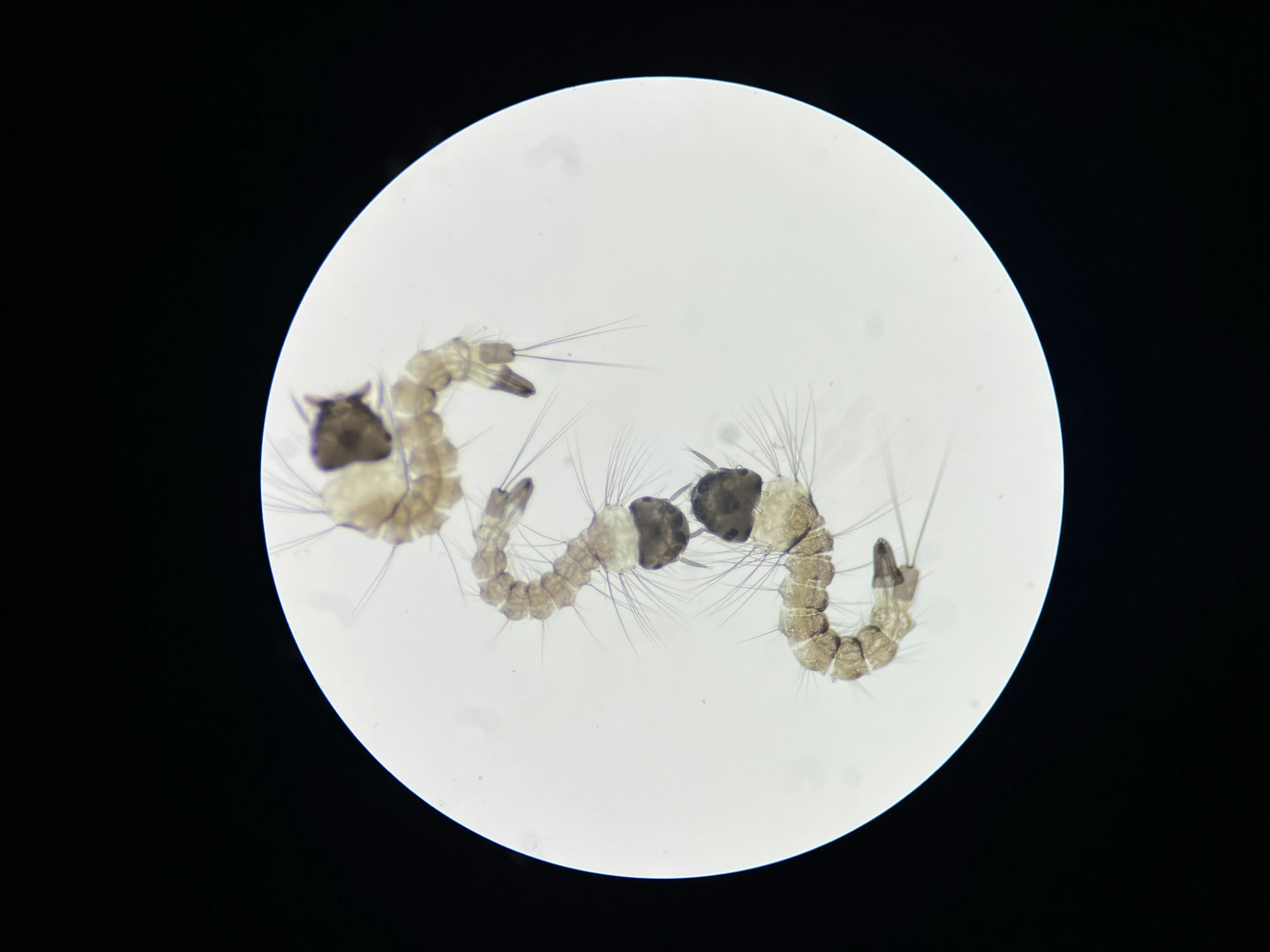2023 Mosquito Surveillance
Adult Mosquitoes (carbon-dioxide trap data)

In December 2023, there were distinct fluctuations of various mosquito species when compared to their five-year December averages. Culex pipiens, a species known for its widespread distribution, exhibited a decreased average count of 0.744, notably lower than its five-year average of 1.557. Conversely, Culex tarsalis displayed a higher count of 0.103 compared to its five-year December average of 0.028. Culex erythrothorax, a mosquito that breeds among tule(cattails) in ponds and lakes, and Culiseta incidence, were also found in lower numbers compared to the 5-year average. These fluctuations may suggest shifts in the ecological dynamics of these mosquito species, potentially influenced by environmental factors such as temperature, rainfall, or seasonality, impacting their breeding and population patterns.
The following table and graphs show the average number of adult mosquitoes collected per CO2 trap per night during December compared to the five year average for the six most common mosquito species in San Mateo County.
| Species | December 2023 | 5-year December average |
|---|---|---|
| _Culex pipiens_ | 0.7 | 1.6 |
| _Culex tarsalis_ | 0.1 | <0.1 |
| _Culiseta incidens_ | <0.1 | 0.3 |
| _Culex erythrothorax_ | 0 | 0.5 |
| _Aedes sierrensis_ | 0 | 0 |
| _Aedes washinoi_ | 0 | 0 |
This chart shows the 5-year average number of mosquitoes collected per trap night by month for the previous 5 years. Data are shown for the six most common species found in San Mateo County.
Larval Mosquitoes (collections from water sources)

During November and December, larval surveillance transitioned from focusing on backyard sources like fountains, fishponds, and containers to monitoring seasonal natural sources such as freshwater impounds and marshes. Water in a confined area is referred to as an 'impound.' Impounds can form in low-lying areas or when man-made structures like dams, levees, and gates prevent the flow of water. Impounds of standing water can be a significant source of mosquitoes. Much of our work in the rainy months is focused on these seasonally-formed impounds. Staff manage these large impounded areas by inspecting for mosquito larvae and applying larvicides that control mosquitoes in the juvenile larval stage before they can become adults.
A District vector control technician uses a dipper to take a sample of the water and visually determines whether any mosquito larvae are present. The technician then transports the sample to the laboratory for the larvae to be counted and identified.
This December, 54 larval samples were checked by the lab. Seven different mosquito species were identified in larval samples. Some samples contain larvae of multiple mosquito species. The species most often found in samples was Culiseta incidens, present in 34 of the 54 samples (63%). This mosquito is found year-round in San Mateo County in a variety of sources, especially in backyard fountains and fishponds. It is not known to transmit disease.
Other winter marsh mosquito species are becoming more common towards the end of the year. These species include Culiseta inornata and Aedes washinoi. These mosquitoes are found in both fresh and brackish water sources that become larger and more numerous after rainfall. Although these species do not currently vector any diseases in this region, they will eagerly bite mammals, including humans.
Page last reviewed: January 9, 2024
